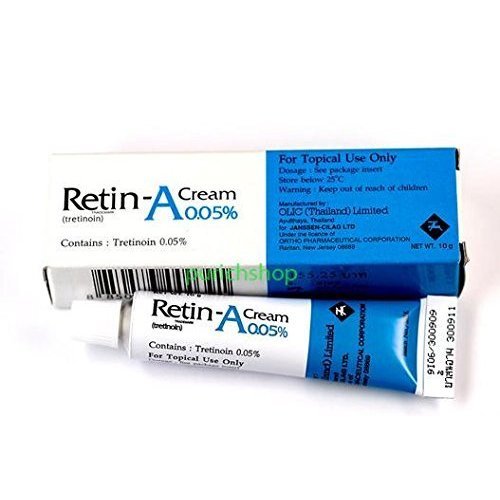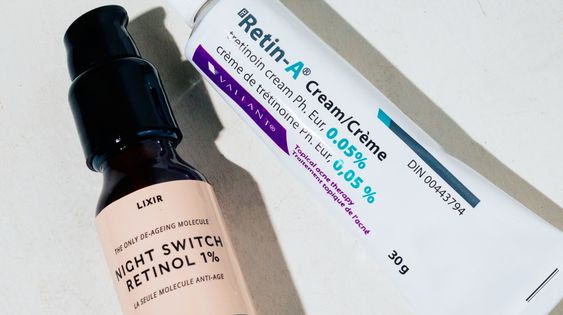Tretinoin and retinol are two different skin care products. Do not confuse them for one another. Yes, we sometimes refer to tretinoin as Retin-A, which makes it easy to confuse it with retinol. But they are vastly different products. And if you are looking for dermatological products for acne, you are surely into the tretinoin versus retinol debate.
Whenever you are looking for dermatological products and inventions for acne, two products hit you in the face. Those are tretinoin and retinol. But what are these two? Are they similar? Do they help in the same way?
How strong is one compared to the other? Well, retinol, which proved to help when applied topically, is considered to be approximately ten times less potent than tretinoin.
With that in mind, let’s dig into the tretinoinvs retinol debate.
What Is Retinol?
Let’s start with the latter part of the comparison. Retinol cream is a kind of a topical retinoid, which is a naturally-occurring derivative of vitamin A. It helps smooth out the skin.
Other benefits of retinol include speeding up skin cell turnover, evening out pigmentation, diminishing fine lines and wrinkles, and unclogging skin pores.
When you consider popular skincare products, most of them contain retinol as an active ingredient. The percentage can vary, but most popular skincare products contain retinol.
There is also one vast difference between tretinoin versus retinol. The former is available as an over-the-counter cosmetic product. Tretinoin, meanwhile, is not an OTC product.
Also checkout:
- Retinoid VS Retinol – Which One Is Best For Anti-Ageing Skincare Routine?
What Is Tretinoin?

As we said before, tretinoin and retinol are not the same product. They have similar ingredients, but also some key differences.
Tretinoin is also a topical retinoid. But unlike retinol, it is a concentration of pure retinoic acid. Retinol, on the other hand, is converted into retinoic acid only after it is stored, applied, and gradually absorbed by your skin.
This is why tretinoin is much more effective in combating acne. But at the same time, tretinoin can cause redness, itching, and peeling for sensitive skin types.
Think of it this way. Tretinoin provides results faster, but with a higher risk. Retinol users will see their results, but it will take longer. But they won’t have to deal with some potential side effects.
This is why you cannot find tretinoin as an over-the-counter product. You can only get it through a prescription from a dermatologist. You have to consult with your dermatologist to determine your skin type and see whether tretinoin is a product for you.
Tretinoin VS Retinol Differences
We mentioned the main difference above. Retinol serum is generally considered a less aggressive substance. As such, it is an ideal product for those with sensitive skin. Retinol is also used in cosmetic dermatology to address fine lines and wrinkles.
Tretinoin, because of its higher potency, is better for treating conditions such as acne. Usually, it is prescribed to those with oily or highly-tolerant skin. You should not use it for treating wrinkles and fine lines. Tretinoin has substantial anti-wrinkle properties, but they come with a higher risk of skin irritation.
How do these products work? Both stimulate turnover in the skin, exfoliating the top dead layers of skin to reveal healthier and smoother skin beneath.
Both substances also stimulate the production of collagen and elastin in the skin. It gives your skin a more toned and youthful appearance.
These substances can also reduce the appearance of discoloration associated with conditions such as sunspots.

What Are The Benefits Of Using These Products?
We talked about tretinoin versus retinol differences. Now let’s talk about the benefits of using each skincare product.
They are both beneficial and improve the appearance of wrinkles, make your skin smoother, minimize pores, and improve pigment distribution. Here are some ways they help your skin look better and more beautiful.
Minimize Fine Lines And Wrinkles
It is a natural part of aging. We all get wrinkles and fine lines. But some external factors like sun damage can speed up the process. Both tretinoin and retinol counteract premature wrinkles and premature aging by accelerating the production of collagen.
This protein is responsible for the skin’s structure. And after the age of 20, collagen production drops by 1% each year. And as the production lowers, fine lines and wrinkles appear.
Luckily, both of these ingredients can increase collagen production.
Reduce Pore Size
Pores appear larger when they are clogged by dirt, dead skin cells, and oil. But by increasing cell turnover, these two topical retinoids enhance the skin’s ability to exfoliate. They clean out debris and allow pores to return to their normal size.
Retinoids, ingredients in these two products, reduce the size of the oil gland, which means less oil production and less buildup.
Improve Skin Texture
Dead skin cells often lead to dry, flaky patches on the skin. Retinol and tretinoin have exfoliating powers we mentioned before. They can reduce the layer of dead skin cells, making it smoother.
Which One Should I Use?
This is a matter of preference. And in any case, you should always consult a dermatologist or a skincare expert. The simple explanation is the following.
Tretinoin will get you in the fast lane to clearer and firmer skin with 20 times the potency of the retinol serum. But there is a potential for side effects. This is why you should consult a dermatologist.
It is always a better idea to start with an over-the-counter product and then move up to something more potent as you feel comfortable.
The downside of retinol is you have no control over the formulation and it is hard to figure out the right concentration for your skin.
Even those with sensitive skin can benefit from tretinoin. The product can even treat skin conditions like psoriasis. But it is important to consult with a specialist to minimize potential side effects.
Working in close consultation with your dermatologist can help you determine whether tretinoin or retinol is the best fit for you. Any patient can benefit from these dermatological substances. Both are designed to create peeling in the skin. Generally speaking, retinol is the better option for those with very dry skin and sensitive skin.
And those with severe acne skin conditions, usually need something more potent, like substantial intervention from tretinoin.
Start Out Slowly
No matter which product you use, it is better to start slowly and built up carefully. OTC retinol products start at 1% concentration or less. Tretinoin products usually have a maximum concentration as high as 2%.
It is important to start slowly and apply the substance in limited quantities. In the beginning, do not use it more than two to three times per week. As your skin adjusts, you can increase the amount and frequency.
